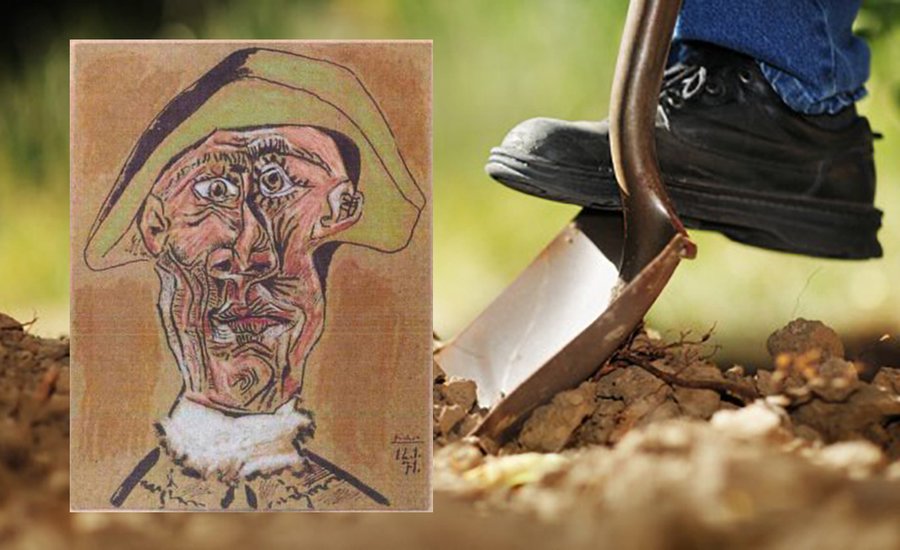Monday morning, the New York Times reported on a painting, found buried under a rock in rural Romania, that Dutch-Romanian author Mira Feticu discovered after receiving an anonymous tip. The painting was thought to be Tête d’Arlequin (“Harlequin Head”) by Pablo Picasso, which had been stolen from a Dutch museum six years ago in a highly publicized heist. Feticu had written a book about the theft, which included six other priceless works of art by Monet, Matisse, Gauguin, Lucian Freud, and Meyer de Haan—said to be worth 18 million to 100 million euros.
Four men in rural Romania were arrested for the crime in 2013, but the paintings were never found. The mother of one of the suspects claimed to have incinerated all of the paintings in her wood-burning stove to protect her son (gasp!) but then retracted her claim in court. Were the paintings really destroyed, or are they still out there? No one knows.
So, when Feticu received the tip about a buried Picasso in the rural hometown of the convicted thieves, she and a colleague quickly booked a flight to Bucharest, rented a car and drove over three hours to the village of Carcaliu, and carefully followed the message’s instructions. “I was told to walk 450 meters down a path and find some markings on a tree,” said Feticu according to the New York Times. “And then a second tree nearby has a red symbol on it. There, under a rock, we found the painting, wrapped in plastic just under the soil. I cried when I saw it.”
The painting was brought to the authorities who worked with conservators to begin authenticating the piece. But the experts had doubts; the line work seemed to be off, and some of the colors seemed wrong. Then, two performance artists, Bart Baele and Yves Degryse, who call themselves BERLIN, claimed that they were the ones who planted the painting—a forged painting—as a piece of “performance art.” In a Facebook post, they explain that “the work is one of the storylines of a performance, which as a whole focuses on the value of truth. What is real and what is not?” Deep (lol). Though the post claimed that the project wasn’t intended as a publicity stunt “as suggested by the media,” the duo plugged a current exhibition of theirs, in the very same sentence.
BERLIN says that the stunt is part of a larger project called True Copy, inspired by the infamous art forger Geert Jan Jansen, who made 10 million euros from his forgeries before being imprisoned when police arrested him in 1994 and uncovered 1600 forged artworks on Jansen’s French farm. Though the life and work of Jansen is endlessly fascinating, there are certainly more interesting—and less time-wasting and dream-crushing—ways of artistically expressing notions of authorship and forgery. Is simply trying (and failing) to mimic a criminal a work of interesting art? No. Does it get publicity? We’re writing about it…
[related-works-module]
























